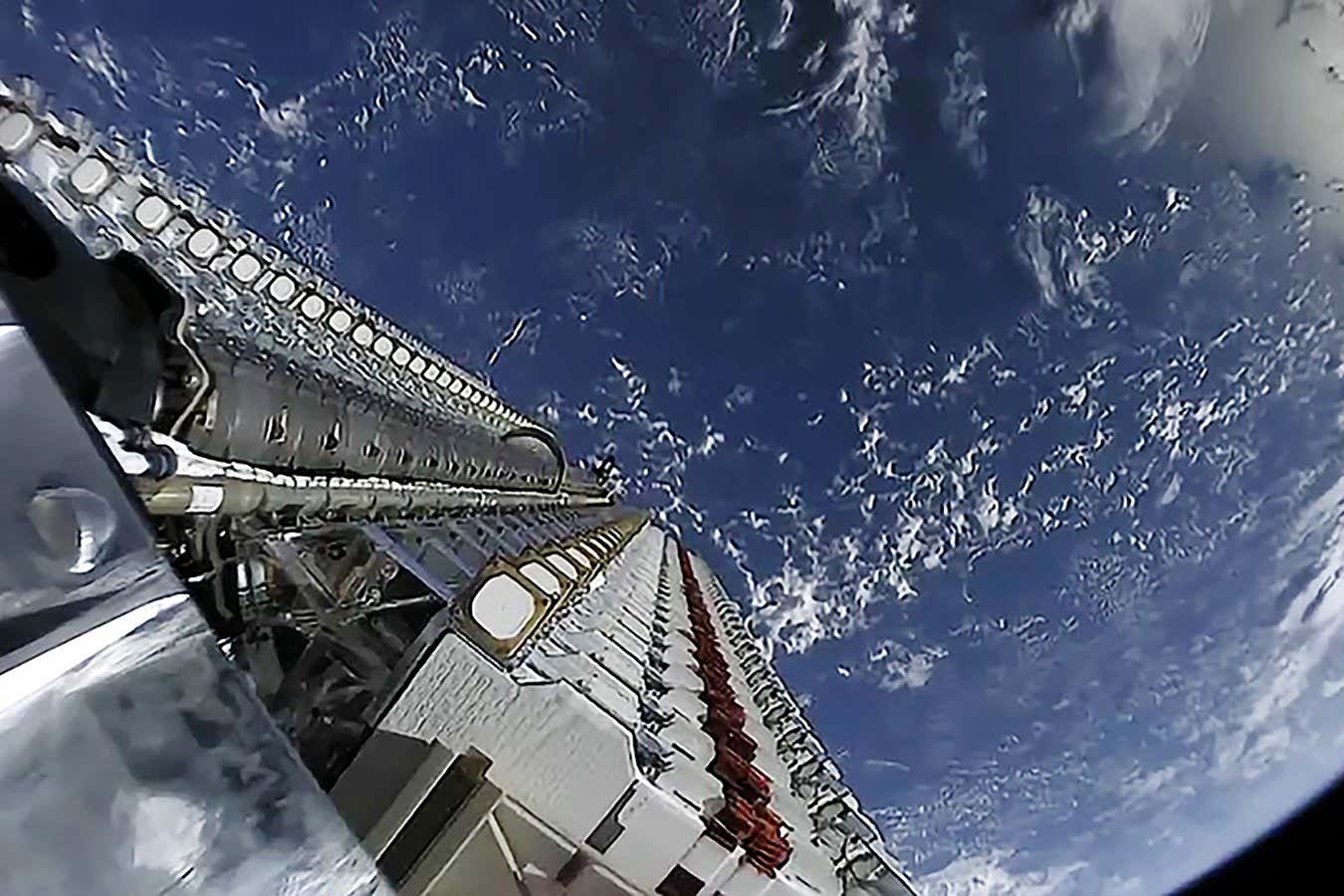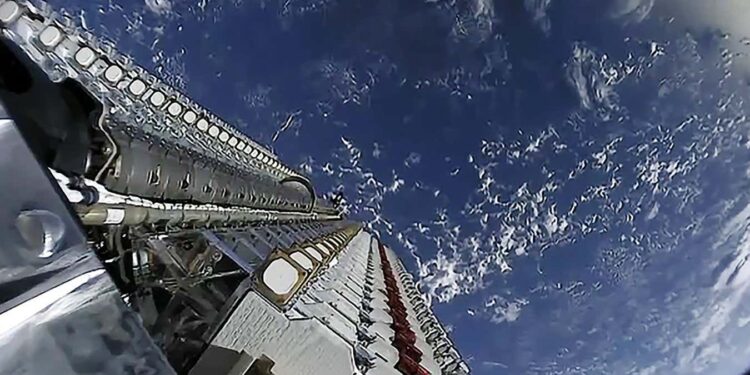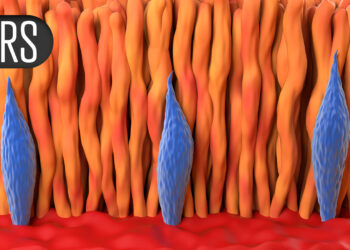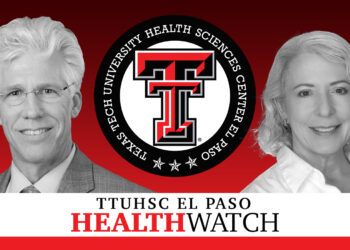
A batch of Starlink satellites launched on a Falcon 9 rocket
SpaceX
SpaceX’s Starlink satellites are leaking radio waves to such an extent that it could threaten our ability to study and understand the early universe, say astronomers.
Interference from the thousands of Starlink satellites in orbit, where they provide a global internet service, has been a continuing concern for astronomers, who say that the radio emissions from the craft could affect sensitive telescopes that observe distant, and faint, radio sources. SpaceX has worked with astronomers to try to prevent this interference, by switching off their internet-transmitting beams when they fly over key telescopes, but it turns out that this isn’t enough.
Steven Tingay at Curtin University in Australia and his colleagues have now tracked the signals from nearly 2000 Starlink satellites, using a prototype telescope from the Square Kilometre Array-Low observatory (SKA-Low) in Australia. This planned collection of more than 100,000 small, linked telescopes is currently under construction to study the early universe, but the researchers found that this goal could be threatened by Starlink signals affecting up to a third of the data taken at some frequencies.
They also found that the satellites were emitting signals at two frequency ranges that are protected for radio astronomy by the International Telecommunication Union (ITU), and so shouldn’t be used by Starlink. However, it is thought that these satellite transmissions are unintentional. The leaking emissions are 10,000 times stronger than faint radio signals from neutral hydrogen clouds that existed when the first stars began to form, signals that astronomers hope to observe in order to understand the early universe.
“If you look at the signal strength produced by these unintended emissions, it’s not unusual for them to be comparable to the brightest natural radio sources in the sky,” says Tingay. “It’s like taking the strongest sources in the sky and putting a bunch more artificial ones in the sky and making them move around a lot — that has a lot of impact, especially on experiments that seek to be ultra-sensitive.”
The emissions are probably coming from onboard electronics that are accidentally transmitting signals through the satellite’s antenna, says Tingay. Such leakage isn’t technically illegal, as the ITU regulations only cover intentional emissions, he says.
“No one’s breaking any rules from SpaceX or Starlink — these types of emissions are not regulated,” says Tingay. “But it is starting to become a discussion in the ITU as to how regulations over this type of emission could be introduced.” The ITU declined to comment.
“The best way to stop this unintended emission is for the satellites to either reduce it or to stop it,” says team member Dylan Grigg, also at Curtin University. “From the operators’ side, it would be great to have mitigations on the satellite, and SpaceX has done that already in optical astronomy.” Starlink made its satellites less reflective to reduce light interference.
“These findings are consistent with previous studies we’ve conducted, but more work is needed to have a clearer picture of the impact on low-frequency observations,” says a spokesperson for SKA-Low.
Grigg and Tingay have already shared their results with SpaceX and say that the company has been open to a dialogue on finding a way to reduce emissions. SpaceX didn’t respond to a request for comment.
If SpaceX can’t find a solution, then researchers will need to introduce algorithmic solutions to filter out the polluting radio waves. However, such efforts are still at an “embryonic stage”, says Tingay, and could require amounts of computing power equivalent to or more than that needed to do the basic processing of astronomical signals of interest in the first place, he says.
Topics:
Source link : https://www.newscientist.com/article/2483574-starlink-satellites-are-leaking-radio-signals-that-may-ruin-astronomy/?utm_campaign=RSS%7CNSNS&utm_source=NSNS&utm_medium=RSS&utm_content=home
Author :
Publish date : 2025-06-09 17:00:00
Copyright for syndicated content belongs to the linked Source.














